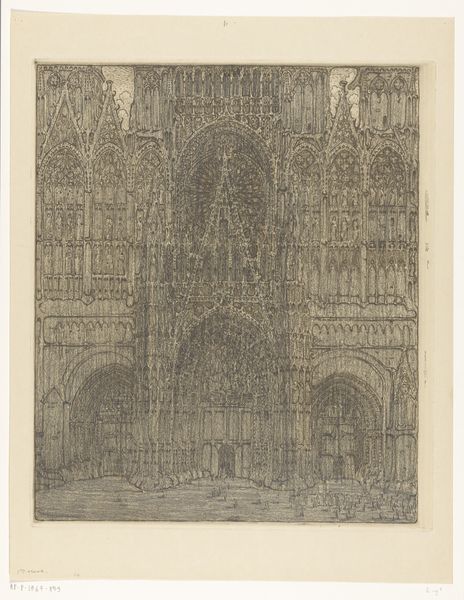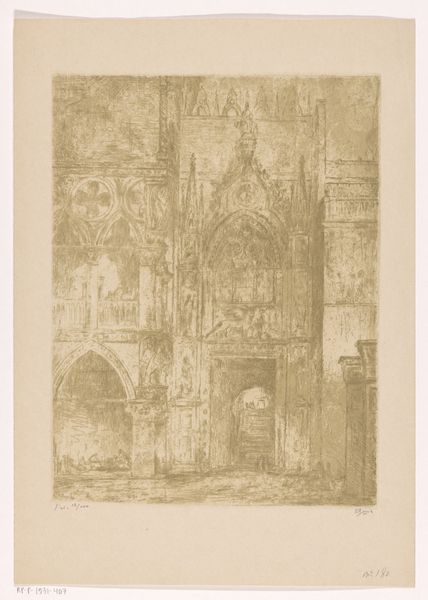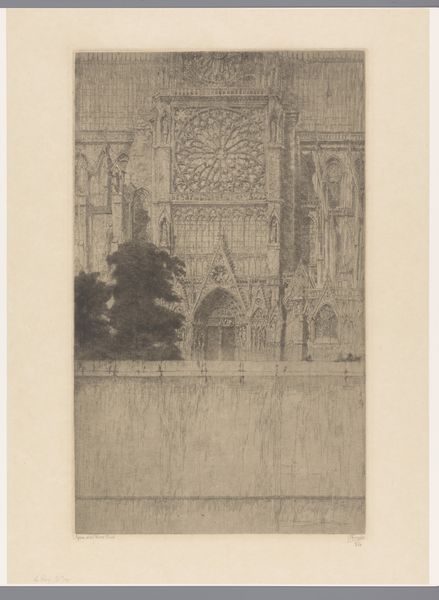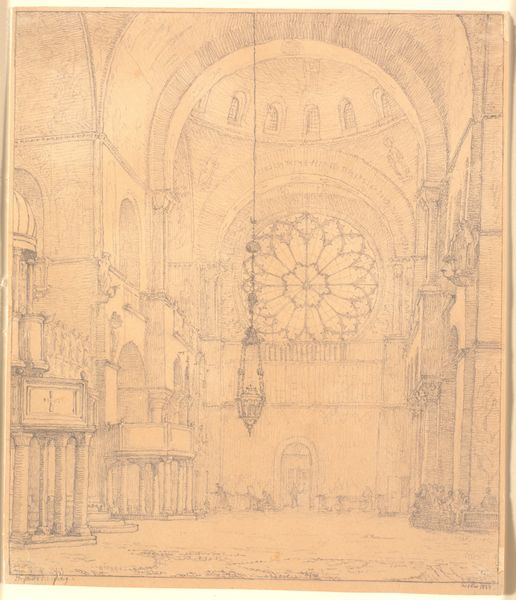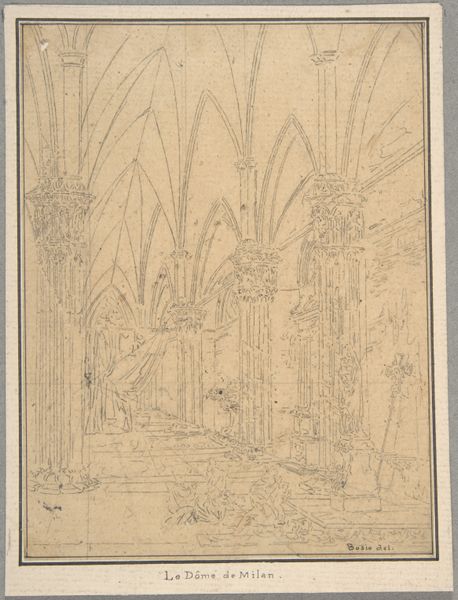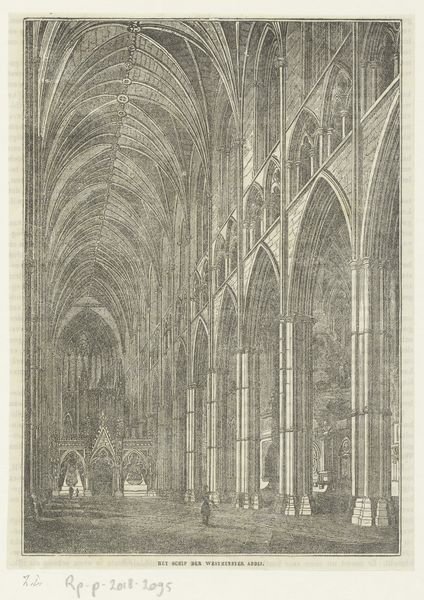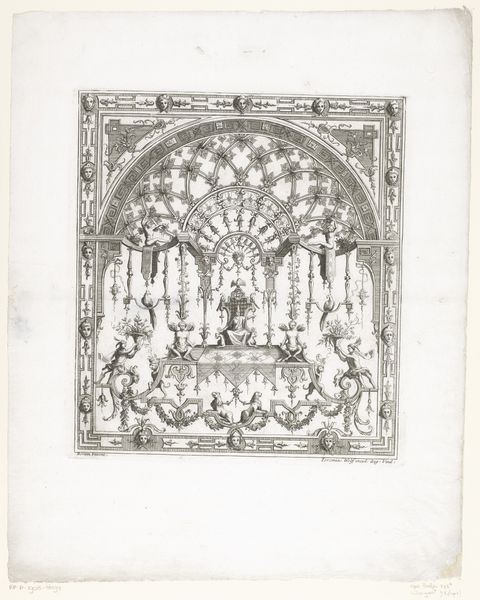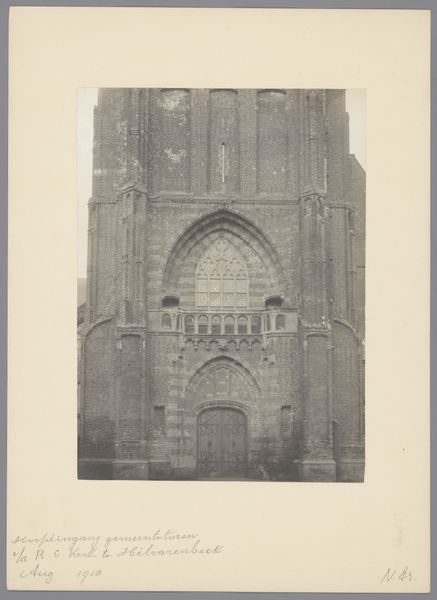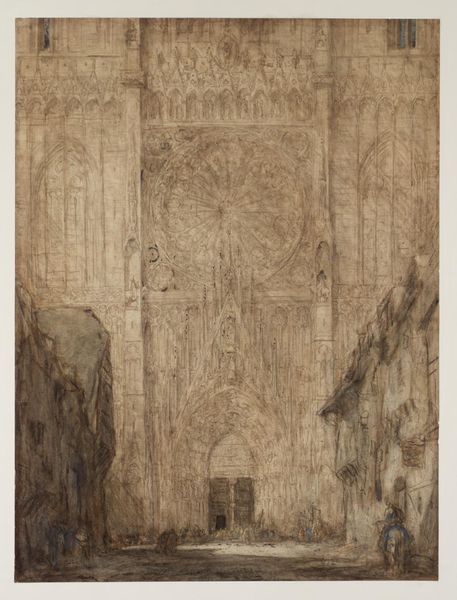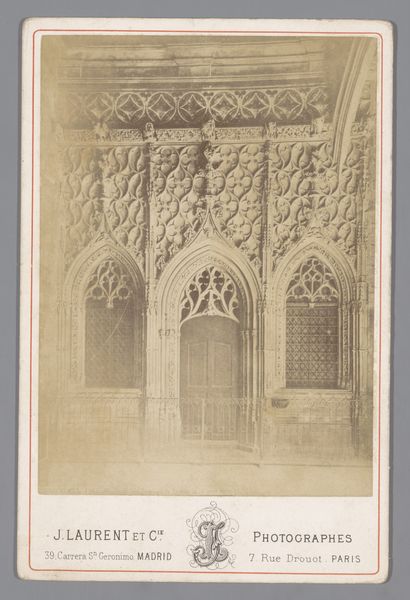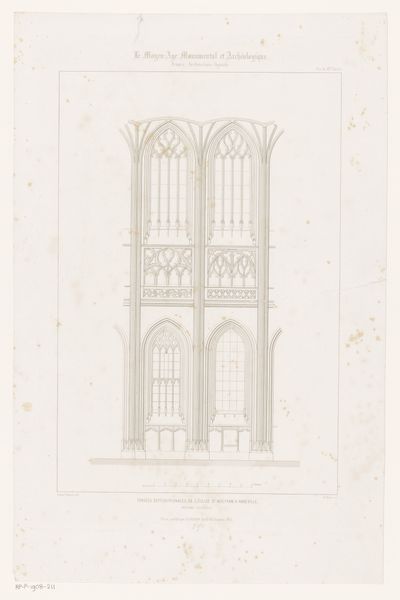
Dimensions: image: 43.8 × 36.7 cm (17 1/4 × 14 7/16 in.) plate: 47.6 × 40.4 cm (18 3/4 × 15 7/8 in.) sheet: 64.6 × 49.8 cm (25 7/16 × 19 5/8 in.)
Copyright: National Gallery of Art: CC0 1.0
Marius Bauer created this etching of the Amiens Cathedral sometime before his death in 1932, using a metal plate, acid, and ink. The image emerges from a dense matrix of etched lines, creating a play of light and shadow that emphasizes the cathedral's gothic architecture. This printmaking technique involves immense labor. The artist meticulously incised lines into a metal plate, bathed it in acid to deepen the grooves, and then used the plate to transfer the image onto paper. Bauer's print captures not only the physical presence of the cathedral but also something of the era's social context. Printmaking allowed for wider distribution of images, democratizing access to art and architecture. The cathedral, originally a symbol of religious and civic authority, is transformed through the printmaking process into a commodity, reproducible and accessible to a broader public. Understanding the materials, the making, and the context allows us to appreciate the full meaning of this artwork, and challenges traditional distinctions between fine art and craft.
Comments
No comments
Be the first to comment and join the conversation on the ultimate creative platform.
